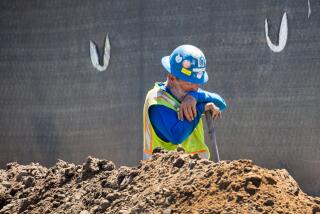Hot springs’ greater danger: extreme temperature swings
- Share via
Perhaps a greater health risk in hot springs is the danger of extreme temperature changes, from tepid to scalding in minutes.
In general, the pools can hold temperatures of up to 140 degrees and hotter. The hottest hot springs in Southern California is believed to be Sespe Hot Springs in the Los Padres National Forest. One longtime visitor said the water is so hot, he once boiled an egg in the pool.
In some hot springs, the water is heated when surface water seeps into fissures hundreds of feet below, making contact with super-heated magma and then percolating to the surface. Water temperatures drop when mineral deposits underground block ground water from fractures leading to the magma. But when new fractures open or mineral deposits loosen due to seismic activity, water temperatures can shoot up dramatically in seconds.
Such is the case at a popular swimming hole along Hot Creek near Mammoth Mountain, a dormant volcano in the Eastern Sierra, about 310 miles north of Los Angeles. Hot Creek and several hot springs pools near the mountain draw many bathers each year. But federal parks officials have fenced off Hot Creek and banned swimming there because of the risk of extreme temperature changes. More than a dozen people have been killed or scalded in the creek since the 1960s, according to signs posted around the creek.
Still, hot springs fans regularly ignore the signs and scale the fences to soak in the super-charged waters.
Lisa Fernandez and other hot springs enthusiasts suggest bathers use a thermometer, tied to a string, to test water temperatures before entering.
“The more rustic the hot spring, the more you have to be careful,” she said. “But just use your best judgment.”
-- Hugo Martin
More to Read
Sign up for The Wild
We’ll help you find the best places to hike, bike and run, as well as the perfect silent spots for meditation and yoga.
You may occasionally receive promotional content from the Los Angeles Times.







